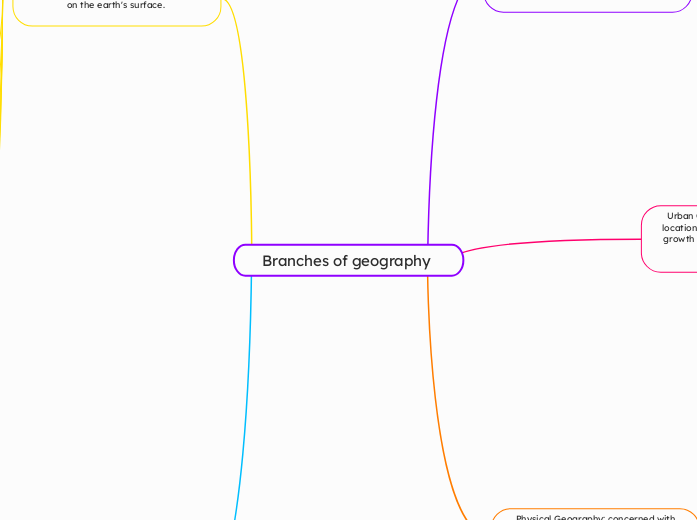по Jace Haw-Morrish 10 месяца назад
122
Branches of geography

по Jace Haw-Morrish 10 месяца назад
122

Больше похоже на это
The coastal environments of the planet and how humans, coastal life, and coastal physical features interact.
Development of mountain systems and at the humans who live in higher altitudes and their adaptations.
Distribution of long-term weather patterns and activities of the earth's atmosphere.
Extreme events known as hazards or disasters and explore the human interaction to them.
All aspects of boundaries, country, state, and nation development, diplomacy, voting, and more.
Develops databases of geographic information and systems to display geographic data in a map-like format.
Improving and developing technologies in map-making
Using satellites and sensors to examine features on or near the earth's surface from a distance.
Subtopic
Distribution of water across the planet within the hydrologic cycle and of human-developed systems for water storage, distribution, and use.
Give teachers the knowledge they need to help combat geographic illiteracy and to develop future generations of geographers.
Distribution of military facilities and troops, and also geographic tools to develop military solutions.
Distribution of disease, illness, death and health care.
Distribution, migration, and growth of population in geographic areas.
Study of the upper layer of the lithosphere, the soil, of the earth and its categorization and patterns of distribution
study of rural settlement, the distribution of agriculture and the geographic movement and access to agricultural products.
Research transportation networks and the use of those networks for moving people and goods.
Study of leisure-time activities and their impact on local environments